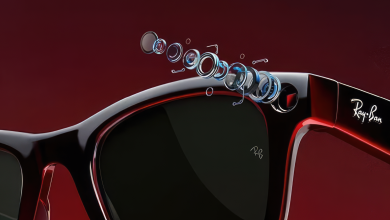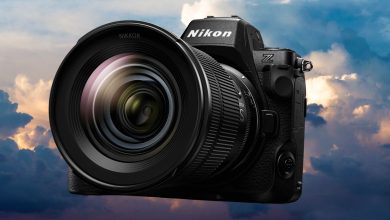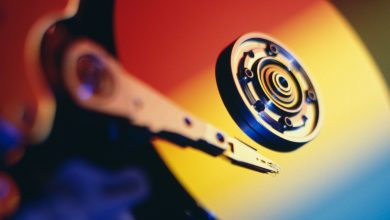The Small Camera Revolution: How Portability Redefined Visual Storytelling in 2025
Chase Jarvis popularized “The best camera is the one you have with you” back when that meant carrying a point-and-shoot instead of your DSLR. In 2025, I'd update it: “The best camera is the one you have with you—most of the time.”
That addition matters. Sometimes your phone is enough. Sometimes it isn't. Knowing the difference separates professionals from hobbyists.
Standing at a shoot last month, I reached for my iPhone 17 Pro instead of the mirrorless in my bag. Not as a compromise—as the right tool. That moment captures where photography landed in 2025: smaller tools doing more, and smarter decisions about when “enough” is actually enough.
What Actually Changed

The numbers tell a clear story. CIPA data for 2024 marked the first increase in camera shipments since 2017—but context matters. Dedicated cameras hit around 8 million units shipped. Apple alone moves over 200 million iPhones annually.
Flickr's 2023-2024 data showed Apple commanding 54% of uploads, Canon at 23%, Nikon at 18%. Even among dedicated photo enthusiasts still using Flickr, the iPhone 11—a four-year-old model—logged over 13 million image tags. More than any dedicated camera.
The shift isn't smartphones replacing cameras. It's cameras becoming specialist tools instead of default choices.
The Small Camera Landscape
| Camera Type | Price Range | Battery Life | Weight | Best For | Key Limitation | Workflow Speed |
|---|---|---|---|---|---|---|
| Action Camera | $349-449 | 1.5-4 hours | 145-155g | POV/mounting/rough conditions | Small sensor, mixed lighting | ⚡ Fast (direct share) |
| Smartphone | $999-1,199 | 2-3 hours photo use | 200-240g | Always available, immediate sharing | Limited telephoto, depth control | ⚡⚡ Fastest (edit on device) |
| Gimbal Camera | $499-669 | 2-3 hours | 180-220g | Walking video, smooth motion | Low-light, client perception | ⚡ Fast (direct share) |
| Mirrorless/DSLR | $4,000-8,000+ kit | All day (500-1,000 shots) | 800-1,200g+ with lens | Professional deliverables, specialist needs | Cost, weight, complexity | ⏱️ Slow (import/edit/export) |
Quick Reference Notes:
Action Cameras: GoPro HERO13 Black ($399), DJI Osmo Action 5 Pro ($349)
- Best battery: DJI (4 hours) vs GoPro (90 min)
- Best sensor: DJI 1/1.3″ vs GoPro 1/1.9″
- Water resistance: DJI 20m vs GoPro 10m
Smartphones: iPhone 17 Pro ($1,099), Google Pixel 10 Pro ($999)
- Triple 48MP sensors (iPhone)
- 8x optical-quality zoom (iPhone)
- Fastest workflow: capture to publish in minutes
Gimbal Cameras: DJI Pocket 3 ($499-669)
- Built-in 3-axis stabilization
- 1-inch sensor, 4K/120fps
- Pocket-sized with automatic tracking
Mirrorless/DSLR: Canon R5 II ($4,299), Sony A7R V ($3,898), Nikon Z8 ($3,996)
- Body only – add $3,000-7,000 for lens kit
- True telephoto, shallow DOF control
- Professional workflow and reliability
Action Cameras: Built for Consequence-Free Shooting
Top picks: GoPro HERO13 Black ($399) | DJI Osmo Action 5 Pro ($349)
GoPro introduced modular lenses—swap between ultra-wide, macro, and anamorphic without carrying multiple bodies. The camera recognizes which lens is attached and adjusts automatically.
DJI counters with practical advantages: larger 1/1.3″ sensor (better low-light), 4-hour battery versus GoPro's 90 minutes, 47GB internal storage backup, and 20-meter water resistance versus 10 meters.
Where they excel: POV documentation, helmet mounts, chest rigs, drone mounting, anywhere camera damage is likely and your main camera is too valuable to risk.
Honest limitations: Small sensors struggle in mixed lighting. Limited manual control. Audio requires external mics for professional work. Client perception varies—adventure brands love them, corporate clients might question your professionalism.
Smartphones: The Always-There Option
Current leaders: iPhone 17 Pro ($1,099) | Google Pixel 10 Pro ($999)
The iPhone 17 Pro packs three 48MP sensors (main, ultra-wide, telephoto), 8x optical-quality zoom, and computational photography that analyzes scenes before you shoot, capturing multiple frames and combining them in milliseconds.
Where phones match dedicated cameras: Social media, web publication, prints up to 11×14″, good lighting conditions, 24-200mm equivalent range, video for online platforms. The workflow advantage—capture, edit, publish on one device—compounds the technical capability.
Where phones hit limits: True telephoto beyond 200mm. Shallow depth of field control. RAW flexibility under extreme editing. Sustained recording without thermal throttling. Professional audio inputs. Weather sealing. Client perception in traditional contexts.
The battery constraint: Heavy photo/video use drains your communication device. Dedicated cameras separate those functions.
Gimbal Cameras: The Smooth Operators
Primary option: DJI Pocket 3 ($499)
Built-in 3-axis gimbal, 1-inch sensor, 4K/120fps, automatic subject tracking—all smaller than a water bottle. Designed for walking interviews, travel vlogs, real estate tours, anything requiring smooth handheld video without carrying a phone gimbal or camera rig setup.
Reality check: The tiny form factor creates client perception issues in paid contexts. Low-light trails larger sensors significantly. But for content creators building online audiences, consistency and output volume matter more than perfection.
360 Cameras: The Immersive Niche
Current models: Insta360 X5 ($499) | GoPro MAX ($579)
Capture everything, choose the frame in post. The technology works—8K resolution, near-perfect stabilization. But viewing behavior hasn't caught up. Most 360 content gets viewed as standard video with software panning.
Where 360 works: Real estate virtual tours, event documentation, action sports with viewer-controlled POV, VR applications, situations where you can't predict the important angle.
The workflow tax: Massive file sizes (5-minute 5.7K video easily exceeds 10GB), significant processing power required, time-consuming stitching. The creative process shifts to post-production direction.
Mirrorless & DSLR: The Specialists
Professional standards: Canon EOS R5 Mark II ($4,299) | Sony A7R V ($3,898) | Nikon Z8 ($3,996)
For specific use cases that require these capabilities:
- True telephoto reach (600mm+ lenses for wildlife, sports)
- Shallow depth of field control (full-frame + f/1.2-2.8 lenses)
- Dynamic range in difficult lighting (mixed indoor/outdoor, stage work)
- RAW file flexibility for significant editing or large prints
- Tethered shooting for commercial work
- Battery life (500-1000+ shots per charge)
- Legitimate weather sealing
- Specialized lens ecosystem (macro, tilt-shift, ultra-wide)
When you actually need this: Paid commercial work with specific requirements, weddings requiring redundancy, sports and wildlife where distance matters, studio photography, editorial print work.
The investment reality: Professional mirrorless body ($2,500-4,500) plus lenses ($1,000-3,000 each)—you're easily $8,000-15,000 into a working system. That makes sense for photographers billing enough to justify it. For everyone else, it's credential theater.
The Multi-Camera Reality
Modern professionals don't choose one category—they deploy multiple tools strategically:
- Mirrorless for primary deliverables requiring quality ceiling
- Phone for behind-the-scenes and immediate social content
- Action cam for POV and risk-heavy shots
- Gimbal camera for walking b-roll
Each tool optimizes for its use case. The total multi-camera kit often costs less than a high-end mirrorless plus lenses while offering more capability across scenarios.

The Speed Factor
Time from capture to published matters more in 2025 than absolute technical quality for most use cases. A phone-shot image published in 5 minutes reaches audiences while they care. A technically superior image requiring card transfer, import, editing, and export arrives after interest faded.
This isn't replacing quality with speed—it's matching tool to deadline. Event coverage demonstrates this: action cam + phone workflow delivers social content during the event. Traditional workflow delivers better quality afterward, when momentum already shifted.
What This Means for You
If You're a Content Creator
Start with your current smartphone. Master composition and timing first. Upgrade when you hit specific limitations your phone can't solve (telephoto reach, depth control, low-light performance).
If You're a Professional
Your phone handles quick documentation and social content. Your mirrorless handles primary deliverables where quality matters. Your action cam handles risk-heavy shots. Deploy strategically, not habitually.
If You're Building a Kit
Ask: “Which problems am I solving?” not “Which camera is best?”
A capable small camera kit (iPhone 17 Pro + DJI Action 5 Pro + DJI Pocket 3) totals $2,000-2,500. Professional mirrorless (body + 2-3 lenses) easily exceeds $8,000-12,000.
But phones represent sunk costs most people already carry. The incremental cost of choosing Pro model for camera is $200-400, not $1,200.
The Updated Reality
Chase Jarvis was right about having a camera with you. But “most of the time” acknowledges reality: sometimes your phone handles the job perfectly. Sometimes it doesn't. Sometimes you need the specialist tool.
The professional distinguishes themselves through:
- Vision: Seeing what others miss
- Timing: Being there when it matters
- Execution: Delivering consistently
- Tool selection: Knowing which capability the moment requires
Stop measuring yourself by gear weight. Start measuring yourself by output quality and consistency.
The best camera is the one you have with you—most of the time.
The rest of the time, it's the one you deliberately chose because the job required its specific capabilities.
Know the difference. Deploy accordingly.
🤖 Claude.ai assited with research and grammar for this article. Visuals by Gemini Nano Banana.




